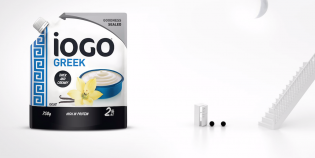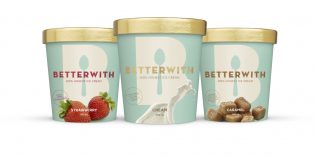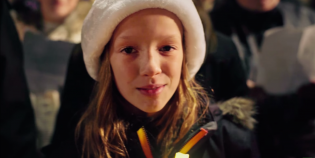Nobody laughed. That was my first thought, sitting there in the darkened movie theatre—me, a guy who for half his career was told the only good ad was a funny ad. Coca-Cola had just treated us to a minute and a half of treacly storytelling about two perky teens romantically united by finding their names printed on pop bottles, and nobody laughed. My second thought was, This is awesome. Maybe advertising is going to be OK after all.
Emotional advertising is here, or it’s back, depending on how you look at it (about which, more in a moment). Either way, it has most definitely become a thing. After years of celebrating pie-in-the-face commercials, award shows like the annual Cannes Lions now frequently have you reaching for a hankie, almost no matter what’s for sale. From this year’s crop of winners, if P&G’s “Pick Them Back Up” tribute to Olympian moms didn’t do it, then Honda’s homage to the late racing driver Ayrton Senna would. If you’d rather just get a little misty, L.A. fashion brand Wren’s “First Kiss” is as adorable as a piano-playing kitten, and Nike’s straight-faced “Possibilities” channels the mighty athletic brand’s pre-irony glory days so much that you might even get off the couch.
As is typical for this age in which nothing of importance is thought to have happened before 1993, pundits are deeming this a trend and even mocking it a little. Fast Company called it “sadvertising,” in an analysis that was thorough, if myopic. NPR titled its examination of the phenomenon “Sad Men,” a headline for which it is probably still congratulating itself. Even The Economist thought emotional advertising worth its lofty attention, though its snark was more muted. What everyone seems to agree on, though, is that this spasm of seriousness is a new development in advertising, a child of this particular moment in time, and that it, too, shall pass. In the words of one creative director, “Any time you see a trend in advertising, that means it’s about to die…. We may be at the tipping point that means we should stop doing [emotional advertising].”
Which is funny, because one of his agency’s contributions to the weepy advertising canon is for Skype, whose Stay Together series is a lovely meditation on how technology can close the distances between people. It’s a strategy AT&T used to great effect in the 1970s to sell long-distance telephony—“Reach out and touch someone”—and again in the 1990s with a series of spots about distant spouses and overworked moms to sell human connection in the nascent digital age. This doesn’t for a second mean Skype’s idea is bad—only that it’s not new.
It is, in fact, timeless. Pundits blame everything from neuroscience to Upworthy for this cathartic interruption of advertising’s jokey assault on pop culture, when it was actually the jokes that were doing the interrupting. Great advertising, by definition, has always presented the world as just a little lovelier than it really is. There is no surer way to make people ready to want what you’re selling.
But the real benefit of emotional advertising is more fundamental than manipulation. Consumers understand advertising as something a corporation has chosen to do. In it, they can see both what that corporation thinks of them and what it thinks of itself. When advertising tries to be funny, it risks portraying the consumer as a dolt and the brand as insincere, no matter how hard everybody laughs.
When it aims for the heart, it can end up making the consumer feel heroic and the brand seem single-minded. Which is no bad thing. I don’t want a brand to be my friend, so I don’t need it to be balanced and realistic in its world view. I like the idea that someone out there is obsessed with laundry detergent, because it means I don’t have to be.
And that’s how Coca-Cola gets away with telling sappy tales about young love. Ever since it lined up all those perky kids on a hilltop in 1971 to sing about buying us all a Coke, the most valuable brand in the world has understood that emotion isn’t a tactic. It’s just what it looks like when a brand takes itself seriously.
Bruce Philp is a brand strategy consultant and author of Consumer Republic, winner of the 2012 National Business Book Award
This story originally appeared in Canadian Business.










